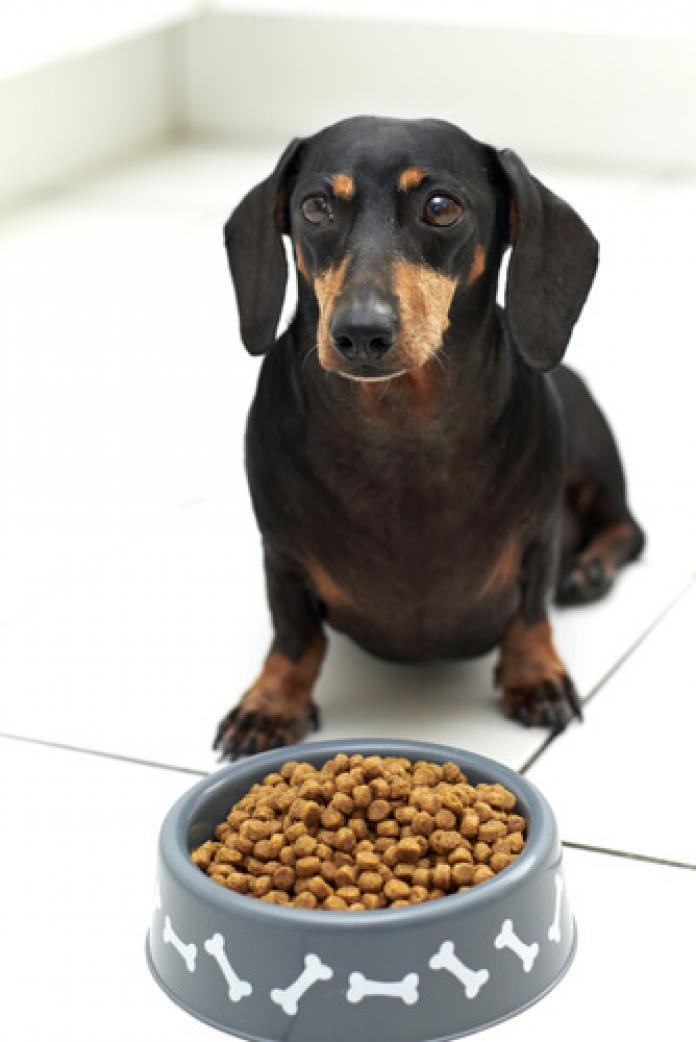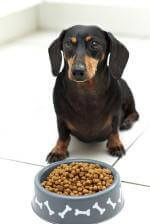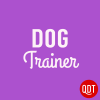How to Train a Dog with Food Rewards
Dogs love food, so it makes a great training tool. Learn how to use it most effectively.


How to Train a Dog with Food Rewards
Here’s the most important point: be generous. To us, what we’re trying to teach our dogs seems simple and reasonable. To our dogs, it’s not so simple and it’s often weird. Dogs have brains the size of lemons (1) and they like to roll in dead animals. They are not us! It’s hard for them to learn that the sounds coming out of our mouth in one context mean the same thing in a completely different context that offers many distractions. We make our lessons even more confusing when we’re not consistent in our choice of words for a cue, when we use different tones of voice, and when our body language varies from situation to situation.
Use Tiny Treats to Reward Your Dog
So when you see the behavior you like, deliver rewards fast and frequently. Use tiny bits–for my 75-pound Pit Bull mix, I use dry dog food and pieces of cheese and meat smaller than my pinky nail. For tiny dogs, use the smallest bits you can handle. Or try offering a lick of canned food. You’re building habits for a lifetime; the more generously you reward the behavior you like while you’re teaching it, the stronger your dog’s good habits will become.
Lure–and-Reward Training
One popular form of dog-friendly training is called “lure and reward.” You’ve used lure and reward if you’ve taught your dog to lie down by putting a treat in front of his nose while he’s sitting, and then bringing the treat down to the ground. He follows the treat, winds up lying down, you say “Yes!” and instantly give him the treat, and that’s lure and reward.
Avoiding Using Food as “Bribery” with Your Dog
You can probably see the pitfall already: are you going to wind up with a dog who’ll only lie down when he’s following the treat in your hand? Many people call this situation “bribery”; it’s probably more accurate to say that the dog has learned to perceive the treat as part of the cue, or has learned that he never gets a reward of any kind unless he sees a treat up front. As a parenthesis, this problem doesn’t generally arise with clicker training. Most of the training tips in these articles are clicker-based. You can find out more about clicker training in the Resources section.
How to Keep the Treat From Being Part of the Cue
To avoid having the treat be part of the cue, we do what’s called “fading the lure.” When you teach a behavior, use the treat to lure your dog only the first few times. The next time, make the luring gesture, but with your hand empty–then say “Yes” and deliver the treat with your other hand. Ideally, you’re keeping the treats on a counter or elsewhere off your person.
When you fade the lure this way, you can gradually morph your luring movement into whatever hand cue you’d like to use. Or you can choose to lure a few times, then stay still and just wait to see what your dog does. Let’s stick with the example of teaching him to lie down. Since he’s just done that behavior several times and gotten rewarded, he’s likely to try it again. Give him a few moments to think. If he lies down all the way, immediately say “Yes” and deliver the treat. If he starts to go down hesitantly, catch the beginning of his downward movement, say “Yes,” and deliver the treat relatively low, so that he has to drop a little further to eat it. Then wait to see what he does next. Chances are good he’ll get the point this time.
Deliver the Treat Where You Want Your Dog to Be
This brings up another important aspect of using food correctly. When you’re teaching your dog a certain position, she should be in that position, or on her way to it, when she gets the food. That’s because whatever position she’s in when she’s rewarded is the position she’s being rewarded for. If you’re teaching your dog to walk next to you on leash without pulling, deliver the food at your side where you’d like her to be. If you’re teaching her to lie down, deliver the food low and right to her mouth or between her forepaws, so she doesn’t even have to stretch up to get it. If she does start to get up, lure her back down with the food, then deliver it. For a more advanced learner, you can pull the food away and wait for her to lie back down on her own, then re-deliver the food.
What to Do If Your Dog Isn’t Motivated by Food
Fairly often, we trainers hear from a client that his or her dog isn’t motivated by food. Assuming the dog is healthy, four common reasons account for most of these situations.
#1: The dog has food in her bowl all day long. If that’s your dog, feed separate meals instead. Pick up any uneaten food after 15 minutes. Training with food isn’t about keeping your dog hungry, but food does lose value if she never feels even a little bit peckish.
#2: The dog is anxious. This often comes up with undersocialized dogs working outdoors–when I meet them I find they pull frantically on leash, their tails are tucked, their ears are down, and when their person offers food they let it fall out of their mouth. Training needs to happen in an environment that doesn’t scare the dog; as for outdoors, we have to alleviate the anxiety before the dog can learn.
#3: The dog is too distracted to eat in the training situation. Dog sees squirrel, dog fixates on squirrel, owner tries to distract dog with a food treat, dog appears completely unaware of food treat. This dog needs more practice in non-distracting situations. And we may need to find a way to use the distractor itself as a reward.
#4: Your dog doesn’t like the treat. There seems to be a lot of wishful thinking out there regarding what dogs like. “He loves sliced apple,” for instance. And some do. For most dogs, though, break out the meaty-cheesy-fishy-smelly if you want their full attention. That goes double if you’re teaching them to leave the pot roast alone. Who are you kidding with the dry biscuits, there?
When Can You Stop Using Food?
Clients often ask: “When can I stop using food?” When your dog responds to a given cue at least 90 percent of the time in different contexts, you can start making your food rewards random and less frequent. But stay generous. Reward sometimes with food, sometimes with play, sometimes with the chance to go back and do more of whatever he was doing when you called him, sometimes with butt scritches. These are all ways of thanking your dog. People often fetishize this idea that dogs should do our bidding just because. That’s a trap. In any good relationship, reciprocity’s the name of the game. The same goes for good training.
Find The Dog Trainer on Facebook or follow me on Twitter, where I’m Dogalini. You can also email me at dogtrainer@quickanddirtytips.comcreate new email. I respond to as many questions as I can, and I may use your comments as the basis of future articles. That’s all for this week. Go get some chicken shreds and teach your dog a trick!
Resources
In clicker training, you teach your dog that the sound of an inexpensive toy clicker means a reward, usually food, is on its way. Then you use the click sound to “mark” behavior you like. Because I want my readers to be able to start training right away without having to go get any equipment, I use a “Yes” in place of the click, but using an actual clicker has real advantages – for example, the sound is distinctive and consistent. When I’m working with clients in person, we almost always clicker train.
My basic guide to clicker training is posted in the Notes section on The Dog Trainer’s Facebook page. You can also learn more about clicker training for free at these websites: www.clickertraining.com and www.clickersolutions.com. My two favorite guides to clicker training are Pat Miller’s The Power of Positive Dog Training and Melissa Alexander’s Click for Joy. Both are available at www.dogwise.com.

